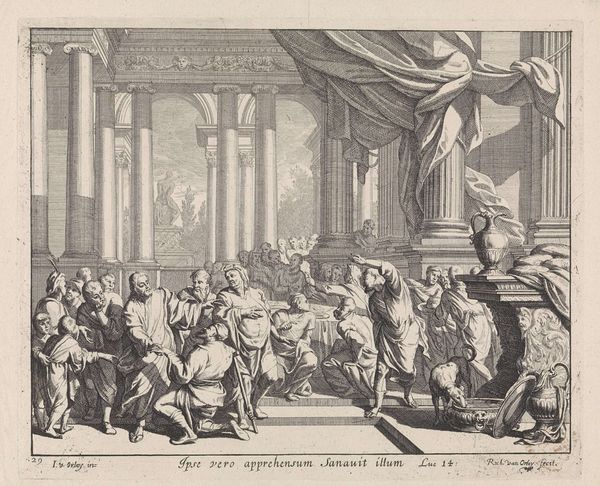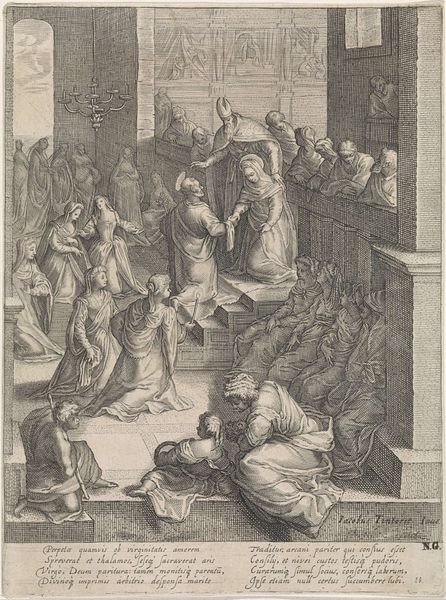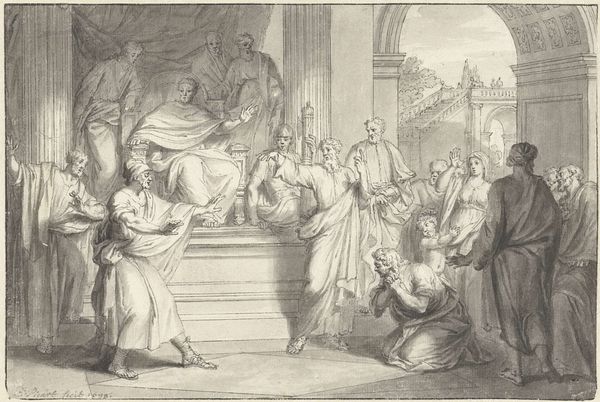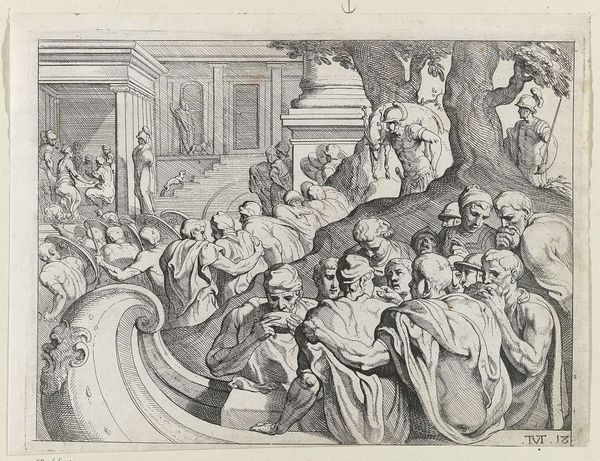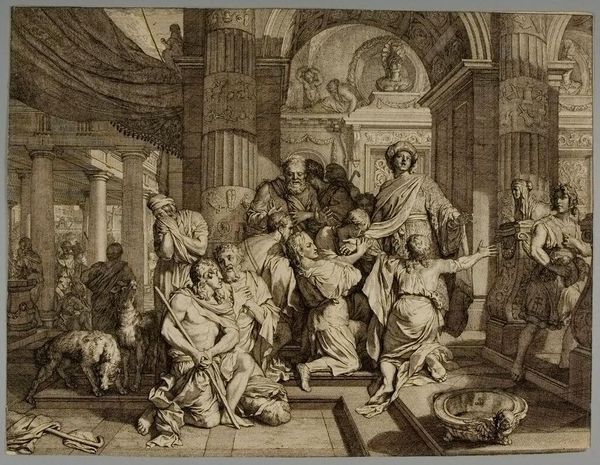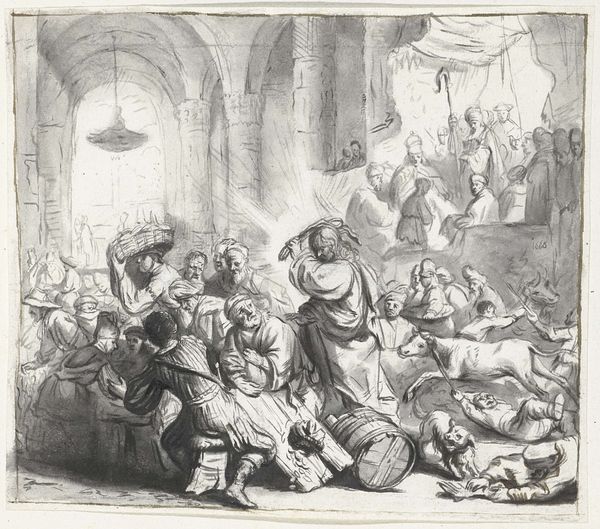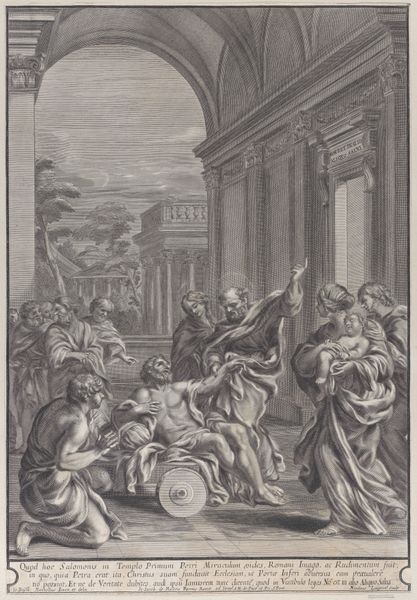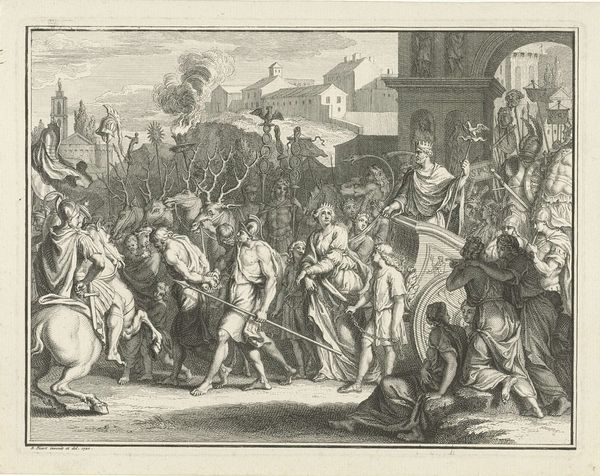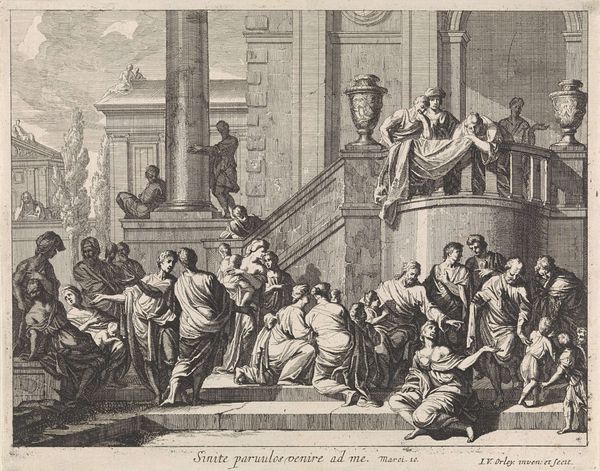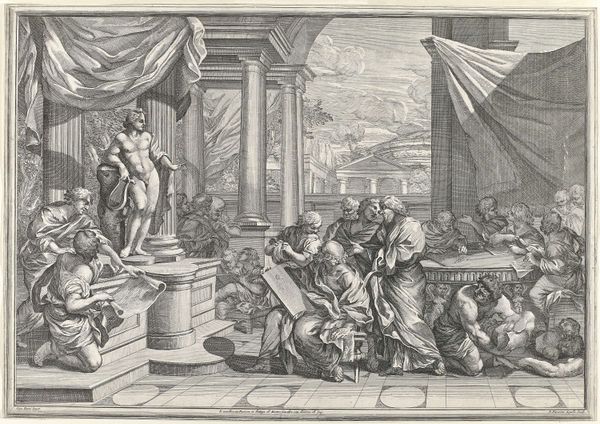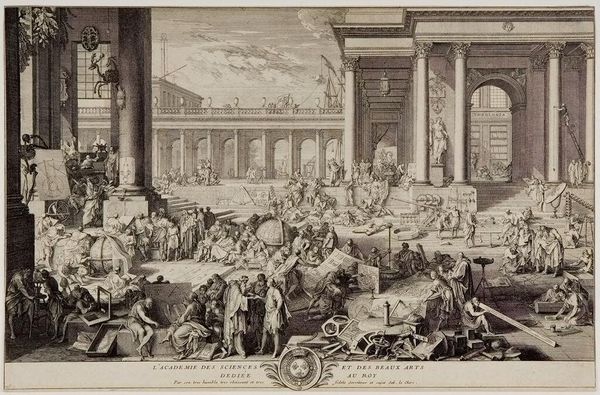
drawing, print, pencil, pen, engraving
#
drawing
#
neoclacissism
# print
#
pencil sketch
#
figuration
#
geometric
#
ancient-mediterranean
#
pencil
#
line
#
pen
#
history-painting
#
engraving
Dimensions: 316 mm (height) x 492 mm (width) (bladmaal), 308 mm (height) x 466 mm (width) (plademaal), 244 mm (height) x 440 mm (width) (billedmaal)
Editor: This is "Lodtrækning af den atheniensiske ungdom", or "Drawing of the Athenian Youth", by J.F. Clemens from 1827. It’s a pencil, pen, and engraving print. The whole composition, despite being black and white, feels very charged and theatrical to me, but I can’t exactly grasp why. What strikes you when you look at it? Curator: The overriding aesthetic mode here is one of geometric rigidity tempered by classical drapery. Consider the artist's construction: a stark linear approach, almost architectural in its precision. The pillars, the steps, even the figures are rendered with a clear, almost diagrammatic line. Editor: Diagrammatic is a great descriptor. It feels so calculated. Curator: Indeed. Note also the use of light and shadow, achieved through densely packed lines versus sparsely filled spaces. Where is the emphasis placed and how is it accomplished, structurally? Editor: I see how the darker shading highlights the main group by the lottery urn and the figure collapsed on the ground, pushing back the background crowds near the pillars. The lines create a real sense of depth. Curator: Precisely. The artist utilizes line not just to define form but to delineate space and, in effect, choreograph our gaze. Clemens directs your eyes in specific planes across the composition. What is the effect? Does the geometry reinforce the narrative, or does it stand apart, creating its own commentary? Editor: I think it amplifies the feeling of rigid fate. This scene isn’t chaotic despite the implied drama; it's bound by structure, a pre-determined order. I had not considered that. Thanks! Curator: And thank you for sharing your perceptive initial response; it’s a pleasure to consider the structural strategies with you.
Comments
No comments
Be the first to comment and join the conversation on the ultimate creative platform.
